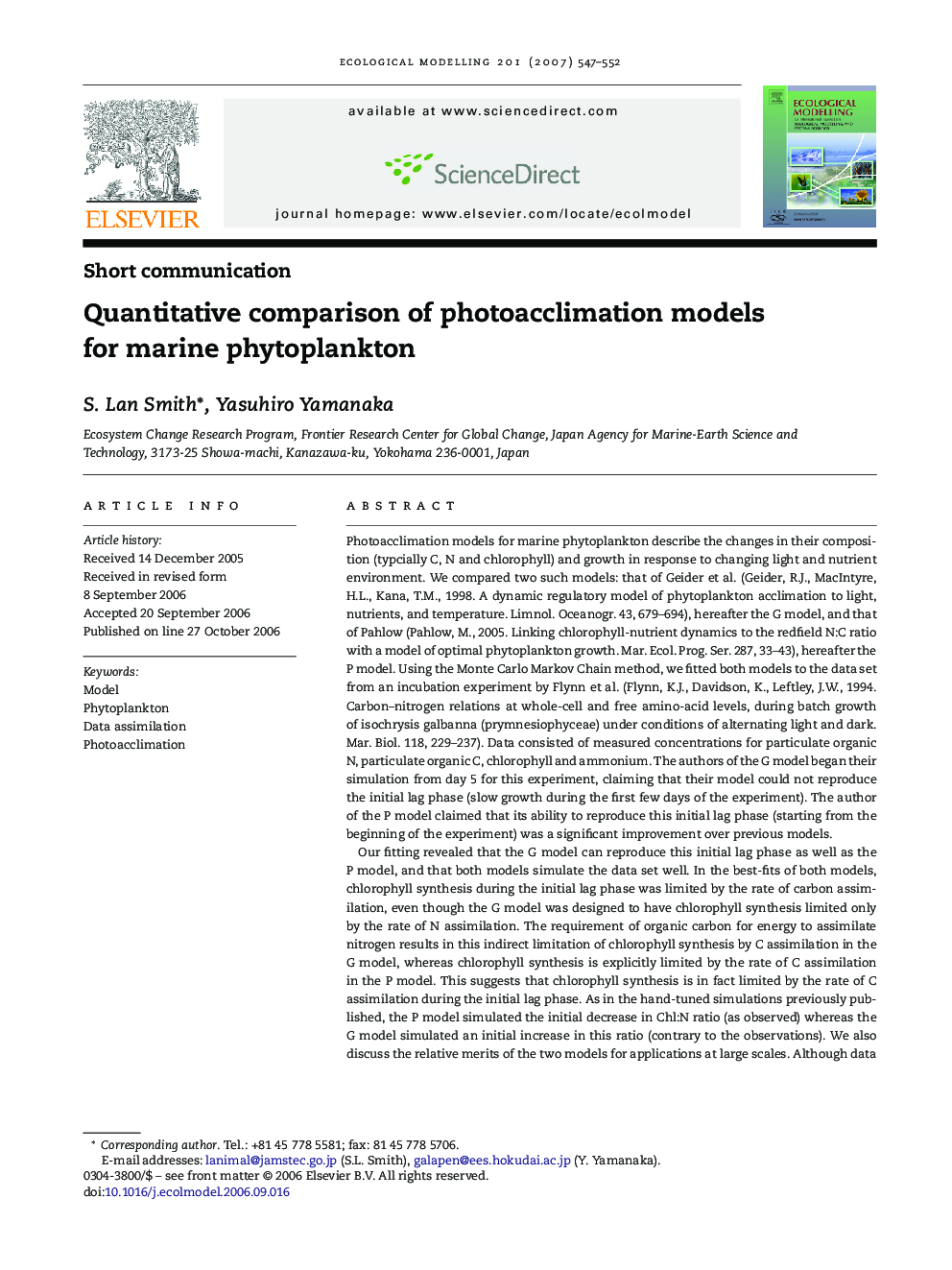| Article ID | Journal | Published Year | Pages | File Type |
|---|---|---|---|---|
| 4378507 | Ecological Modelling | 2007 | 6 Pages |
Abstract
Our fitting revealed that the G model can reproduce this initial lag phase as well as the P model, and that both models simulate the data set well. In the best-fits of both models, chlorophyll synthesis during the initial lag phase was limited by the rate of carbon assimilation, even though the G model was designed to have chlorophyll synthesis limited only by the rate of N assimilation. The requirement of organic carbon for energy to assimilate nitrogen results in this indirect limitation of chlorophyll synthesis by C assimilation in the G model, whereas chlorophyll synthesis is explicitly limited by the rate of C assimilation in the P model. This suggests that chlorophyll synthesis is in fact limited by the rate of C assimilation during the initial lag phase. As in the hand-tuned simulations previously published, the P model simulated the initial decrease in Chl:N ratio (as observed) whereas the G model simulated an initial increase in this ratio (contrary to the observations). We also discuss the relative merits of the two models for applications at large scales. Although data assimilation is not perfectly objective, because it requires certain choices such as weights for various data types and which data to include when fitting, our results show the advantage of mathematically rigorous fitting as opposed to hand-tuning of models. Our best-fits were significantly better than the hand-tuned fits originally published, especially for the G model, and this yielded insight into the mechanism responsible for the initial lag in phytoplankton growth.
Related Topics
Life Sciences
Agricultural and Biological Sciences
Ecology, Evolution, Behavior and Systematics
Authors
S.Lan Smith, Yasuhiro Yamanaka,
